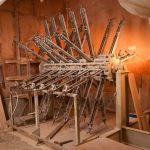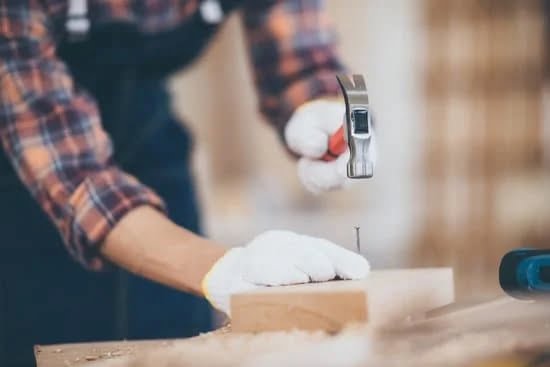Introduction
Woodwork offers a unique experience to children as they learn how to use basic tools and materials in order to create tangible, physical projects. It fosters creativity, builds confidence and provides hands-on learning opportunities. The activity also encourages observation and problem solving, while improving hand-eye coordination and fine motor skills. In the early years, introducing creative woodwork activities can help children develop important life-long behavioural traits such as follow directions, critical thinking and the ability to assess risk. Through active exploration, children can observe the consequences of their actions whilst gaining an understanding of the properties of wood.
Creative woodwork activities introduce concepts such as measurement and design in fun and engaging ways. From carpentry projects to art installation pieces depending on the individual abilities of each child. Learning through creative woodwork nurtures success and boosts self-esteem as children work out solutions for themselves as well provide tangible evidence of accomplishments with visually stunning displays that are sure to inspire admiration from their peers (and teachers). Creative woodworking sessions may include aspects of tool safety and identifying potential hazards to ensure that everyone is able to benefit from a safe environment in which all students can confidently engage in tasks without the risks associated with dangerous environments or tools. By practising problem solving through instructional building tasks, children learn how trial-and-error can be used effectively; acting as a useful platform for future educational endeavours where similar problem solving techniques will be encouraged by trainers/teachers within various education streams or career paths.
Process & Benefits of Learning Through Woodworking
Learning through woodwork can be a valuable and creative experience for young children. Woodworking offers an opportunity to develop important skills such as creativity, confidence, problem-solving, collaboration, dexterity, and more.
Introducing woodworking in the early years of education allows children to have hands-on experiences with materials that become tangible expressions of their ideas. As they plan, measure, mark, draw lines and curves to follow when cutting or sanding the material; children learn skills such as observation and precision along with working from a plan. Not only do they enhance these skills but also acquire an increased sense of responsibility by having ownership of their work from start to finish. The process teaches kids about natural resources too; understanding how trees are used for making products and providing them with an appreciation for the environment.
Moreover, carving projects help kids nurture their self-esteem because it empowers them when they see the finished product of something they created themselves. For example, if they create a toy or game piece out of wood it becomes theirs to keep forever. The feeling that they built something out of nothing encourages them to celebrate their achievements while learning individual developmental stages like patience and resourceful delivery.
Safety & Tools
Woodworking can be an incredibly rewarding activity for early learners, especially when the projects involve creative elements. It’s important to ensure that any activities conducted in the classroom involve all necessary safety precautions, as well as use of tools and materials that are appropriate for little hands. When teaching woodwork, it’s important to introduce proper tool use and safety practices first. For example, wearing protective glasses or using clamps to secure a project while sawing or drilling will help protect students from potential harm and should be modeled until children become familiar with their use.
In addition, parents and teachers will want to pick out and purchase materials specifically designed for a child’s age level or maturity. This can include foam boards or plastic tubes instead of pocket knives. The selection of wood blocks with pre-drilled screwholes give young makers a better chance of building successful projects, along with providing easy access to drills instead of coping saws for cutting shapes out of wood.
Before beginning any project, it is important to assess the student’s level of experience; this is especially true when working with younger children who may not have had experience with basic hand tools like hammers and nails prior to taking part in the activity. Introducing such topics remotely can also increase engagement; showing photos or videos on how different tools are used provides scaffolding for independent learning as well as involving more experienced participants as mentors. Lastly, sharing stories about famous makers (e.g., furniture builder Sam Maloof) during class time encourages creativity while helping students understand that there are no limits when it comes to crafting beautiful things out of wood!
Types of Projects
Woodwork is a great activity for early years learners. It develops skills such as problem solving, spatial reasoning and creativity, while providing an interesting way to learn about numbers and mathematics. In addition, it gives children the chance to explore their creative abilities, build something unique out of raw materials and create useful items which can be used in their daily life.
Projects for young children should begin with simple shapes, like circles and squares, that can be easily connected together. Simple boards can act as a base for projects such as toy houses and cars. Building these structures helps to develop fine motor skills, while they give pupils the opportunity to engage with components that move such as wheels or levers.
Creating furniture or accessories also provides a great learning opportunity in terms of design and problem solving. Constructing side tables or shelves encourages learners to move up from the simpler building blocks modules described previously by considering structure more carefully when joining pieces together into larger objects with more complex shapes.
In addition basic tools can be introduced step by step so students become familiar with how they work safely and efficiently when working wood projects. This could include not only saws and drills but also sanding tools which introduce another skill into woodworking; smoothing the surface of materials to give them a finished look ready for assembly or staining. Further decorations can also be done by introducing different paints or varnishes for finishing touches on projects where required.
Creative Woodworking Projects
Introducing creative woodworking in the early years provides a great opportunity to combine fine motor skills and imagination while encouraging learning through hands-on exploration. Through woodwork activities, children can get an early start on building confidence in using tools, understanding principles of science and mathematics, expanding their creativity, and gaining problem-solving skills.
Woodworking projects for young children should always be age appropriate and include simple shapes and designs. For example, a young child may make a block from scraps of different colored wood pieces, or cut out small animals or shapes from larger pieces of scrap wood. Children can also help prepare tools such as hand saws, planers or sanders – with guidance from an adult. These constructions encourage the use of precise motor control for cutting and shaping as well as help strengthen spatial awareness skills that can be used in future tasks such as geometry.
Younger learners can experiment with color by staining their creations or creating mosaics with light fixtures or floor tiles. After completing the project themselves, they can practice assembly by helping to build birdhouses or other makeshift structures that resemble what we find in nature. They may also test out their carpentry skills by measuring slots accurately to fit drawers together during construction kits assemblies. Ultimately, these activities are valuable is helping build a foundation of problem solving that will eventually benefits students later when engaging more complex tasks requiring a greater degree of precision.
Benefits of Woodworking in The Early Years
Woodworking offers young children a valuable way to learn and grow. It encourages problem-solving, fine motor skills and coordination through practical use, while at the same time developing self-confidence as they experiment with their creations. Research suggests it can help advance numeracy, literacy and self-regulation skills.
Children can develop creative ideas when allowed to explore the properties of wood such wood shapes, sizes, textures. Depending on the age group and level of skill a teacher might introduce more advanced concepts such as sawing, sanding, drilling or hammering (under supervision of course). Engaging activities like these can lead to improved concentration and coordination.
Introducing creative woodwork at an early age also encourages an understanding of engineering as well as artistic design and construction. This can develop into a lifelong passion for building, crafting invention or even pursuing a career in carpentry or design technology.
To make sure children get the most out of their woodworking projects there should be good preparation planning before each project gets underway. As well as offering guidance on how to use tools safely teachers should allow ample time for the children to explore and play with the materials available before getting stuck into any set tasks. Be sure to choose appropriate materials that are safe for little hands too (avoid screws or nails etc.). Celebrate every step along the way – from trial and error to success – this will all add up in building resilience in times of struggle!
Finally don’t forget to equip your learning environment with plenty of resources that promote woodworking activities – books about authors exploring carpentry work is always a great motivation, making a designated tool box so students have easy access to the necessary equipment plus giving some flexibility for open ended creative projects too – all towards inspiring them about the possibilities achievable when engaging in this fun learning activity!
Conclusion
Woodworking has a unique and rewarding way of connecting young children to the natural word. It encourages creative problem-solving, teaches safety and provides a tactile, hands-on approach to learning. Educators should strive to give students of all ages the opportunity to explore woodworking in an engaging, age-appropriate manner by introducing them to specific tools and processes at each stage in their development.
Through woodworking activities, young children can learn core STEM concepts such as measurement, angles, shapes and weight, while developing hand-eye coordination skills. Working with wood allows for experimentation with ideas without worrying about the outcome or hardening into outcomes that are too rigid or strict. Meanwhile, it is just as important for educators to create a safe and respectful environment where children feel comfortable enough to express themselves creatively, feel confident taking risks and make mistakes without fear of judgement or punishment.
In conclusion, introducing creative woodwork in the early years can lead to numerous benefits including improved hand eye coordination and motor skills; Improved spatial understanding; An increase in confidence as well as respect for materials and tools; Skills in problem solving through trial and error thinking; Increased creativity and a great sense of pride upon completion of projects. All these things combined ensure that engaging in appropriate age level activities such as creative woodwork can become an integral part of any progressive curriculum.

Hi everyone! I’m a woodworker and blogger, and this is my woodworking blog. In my blog, I share tips and tricks for woodworkers of all skill levels, as well as project ideas that you can try yourself.





